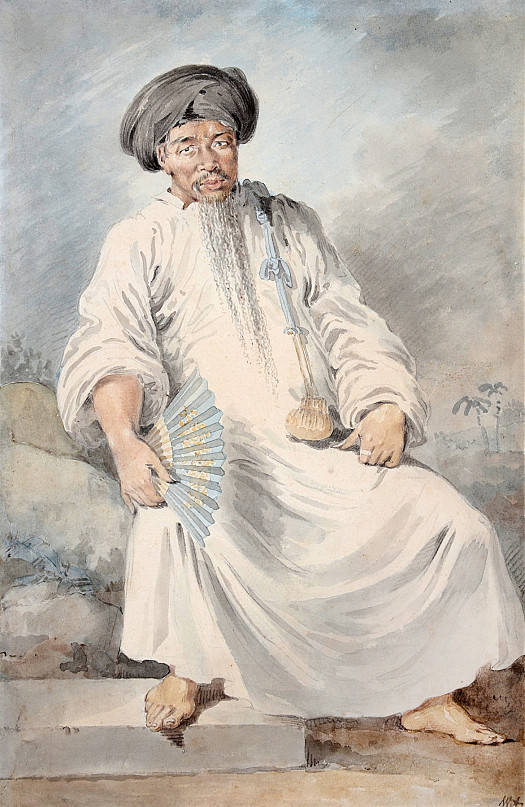William Alexander was born in Maidstone, Kent, on 10 April 1767, the son of a coachbuilder. Educated at Maidstone Grammar School, he showed a talent for drawing at an early age. In 1782, he moved to London to study art, and may have taken lessons with Julius Caesar Ibbetson before entering the Royal Academy Schools two years later.
Ibbetson had taken part on the first – abortive – British mission to Beijing.
It is therefore likely that he recommended Alexander for the post of junior draughtsman in the embassy of Lord Macartney to China (1792-94), for which the senior draughtsman was the Irish artist, Thomas Hickey. The embassy itself proved a failure, as the Emperor Qianlong was uninterested in trade and communication, but the experience provided an inspiration and springboard for Alexander in his career as a painter and illustrator.
On his return from China, Alexander married on 10 April 1795, but his wife died shortly afterwards, and left no children.
During the ensuing decade, Alexander worked up many of his Chinese sketches into finished watercolours, and exhibited the results at the Royal Academy of Arts. In providing highly skilled representations of unusual subjects, they attracted great interest. In turn, his images were engraved for the official record of the embassy (1797) and other publications, including his own View of the headlands, islands, etc, taken during a voyage to, and along the eastern coast of China, in the years 1792 & 1793 (1798), and John Barrow’s A Voyage to Cochin China, in the Years 1792, and 1793 (1806).
In the same period, Alexander attended Dr Monro’s unofficial ‘academy’ at his house in Fetcham, Surrey; there he had the opportunity to work alongside such leading contemporaries as Thomas Girtin, in copying exemplars of the art of watercolour collected by Monro and drawing en plein air in the surrounding countryside. He was also an active member of Girtin’s Sketching Club, ‘The Brothers’.
In 1802, Alexander was appointed Professor of Landscape Drawing at the Junior Department of the Royal Military Academy in Great Marlow,
Buckinghamshire (the forerunner of Sandhurst). William Delamotte and William Gilpin were the second and third masters.
Six years later, in 1808, Alexander resigned from his professorship in order to become first keeper of prints and drawings, and assistant librarian, at the British Museum. In 1810, he began to produce the first inventory of the museum’s collection of prints and drawings. The trustees also commissioned him to illustrate items from the Townley collection, in Taylor Combe’s A Description of the Collection of Ancient Terra-cottas in the British Museum (1810) and a Description of the Collection of Ancient Marbles in the British Museum (1812-18). He was a member of the Society of Antiquaries.
Later in life, Alexander produced a number of picturesque landscapes as well as drawings of antiquities.
Alexander died of a brain fever on 23 July 1816 at his uncle’s house in Maidstone. He was buried at Boxley, Kent. Some of his collection of contemporary British paintings and drawings was sold at Sothebys in the following year.
His work is represented in numerous public collections, including the British Library, Tate and the V&A.
Further reading:
Patrick Conner, ‘Alexander, William (b Maidstone, Kent, 10 April 1767; d Maidstone, 23 July 1816)’, Jane Turner (ed), The Dictionary of Art, London: Macmillan, 1996, vol 1, page 612; Patrick Conner and Susan Sloman, William Alexander: An English Artist in Imperial China, Brighton Museum and Art Gallery, 1981; Richard Garnett (rev Heather M MacLennan), ‘Alexander, William (1767-1816)’, H C G Matthew and Brian Harrison (eds), Oxford Dictionary of National Biography, Oxford University Press, 2004, vol 1, pages 695-696; Susan Sloman, Image of China: William Alexander, London: Jupiter Books, 1980


